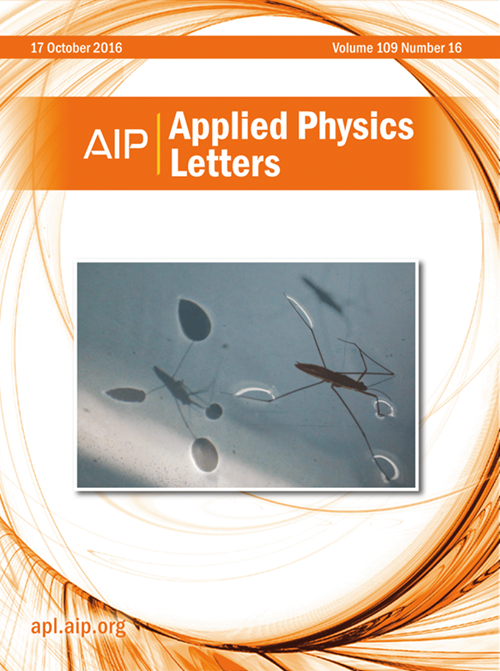Activity trends of Pd clusters supported on C2N for oxygen evolution and reduction reactions
IF 3.5
2区 物理与天体物理
Q2 PHYSICS, APPLIED
引用次数: 0
Abstract
Developing highly efficient electrocatalysts for the oxygen evolution reaction (OER) and reduction reaction (ORR) is crucial for future renewable energy technology. Here, we use first-principles calculations combined with genetic algorithm to determine the structures of various Pd clusters supported on experimentally available C2N monolayer and evaluate the OER and ORR performance. Our findings show that the activity of the supported Pd clusters is closely linked to the local geometrical and electronic structure of the active site. Furthermore, we establish the activity trends of the clusters based on the adsorption free energies of intermediates. In particular, C2N supported Pd7 and Pd8 clusters exhibit outstanding OER activity with low overpotentials. We identify a volcano relation for the OER on the clusters, suggesting that the high activity of the cluster is related to the moderate adsorption strength of intermediates. Mechanistic analysis indicates that the second water formation is the potential-determining step for ORR on the clusters due to the strong adsorption of *OH. Additionally, we identify a linear scaling relationship between the ORR overpotentials and adsorption free energies of *OH, demonstrating that reducing the adsorption strength of reaction intermediates on Pd clusters can improve the activity. This work unravels the activity trends of cluster catalysts and provides strategies for the rational design of highly efficient single-cluster catalysts for OER and ORR.C2N 上支撑的钯团簇在氧进化和还原反应中的活性趋势
开发用于氧进化反应(OER)和还原反应(ORR)的高效电催化剂对未来的可再生能源技术至关重要。在此,我们利用第一性原理计算结合遗传算法,确定了支撑在实验可用的 C2N 单层上的各种钯团簇的结构,并评估了 OER 和 ORR 性能。我们的研究结果表明,支撑钯簇的活性与活性位点的局部几何和电子结构密切相关。此外,我们还根据中间产物的吸附自由能确定了簇合物的活性趋势。其中,C2N 支持的 Pd7 和 Pd8 簇具有出色的 OER 活性和较低的过电位。我们发现簇上的 OER 存在火山关系,表明簇的高活性与中间体的适度吸附强度有关。机理分析表明,由于*OH的强吸附作用,第二次水形成是簇上ORR的电位决定步骤。此外,我们还发现 ORR 过电位与 *OH 的吸附自由能之间存在线性比例关系,这表明降低反应中间产物在钯团簇上的吸附强度可以提高活性。这项研究揭示了簇催化剂的活性趋势,为合理设计用于 OER 和 ORR 的高效单簇催化剂提供了策略。
本文章由计算机程序翻译,如有差异,请以英文原文为准。
求助全文
约1分钟内获得全文
求助全文
来源期刊

Applied Physics Letters
物理-物理:应用
CiteScore
6.40
自引率
10.00%
发文量
1821
审稿时长
1.6 months
期刊介绍:
Applied Physics Letters (APL) features concise, up-to-date reports on significant new findings in applied physics. Emphasizing rapid dissemination of key data and new physical insights, APL offers prompt publication of new experimental and theoretical papers reporting applications of physics phenomena to all branches of science, engineering, and modern technology.
In addition to regular articles, the journal also publishes invited Fast Track, Perspectives, and in-depth Editorials which report on cutting-edge areas in applied physics.
APL Perspectives are forward-looking invited letters which highlight recent developments or discoveries. Emphasis is placed on very recent developments, potentially disruptive technologies, open questions and possible solutions. They also include a mini-roadmap detailing where the community should direct efforts in order for the phenomena to be viable for application and the challenges associated with meeting that performance threshold. Perspectives are characterized by personal viewpoints and opinions of recognized experts in the field.
Fast Track articles are invited original research articles that report results that are particularly novel and important or provide a significant advancement in an emerging field. Because of the urgency and scientific importance of the work, the peer review process is accelerated. If, during the review process, it becomes apparent that the paper does not meet the Fast Track criterion, it is returned to a normal track.
 求助内容:
求助内容: 应助结果提醒方式:
应助结果提醒方式:


